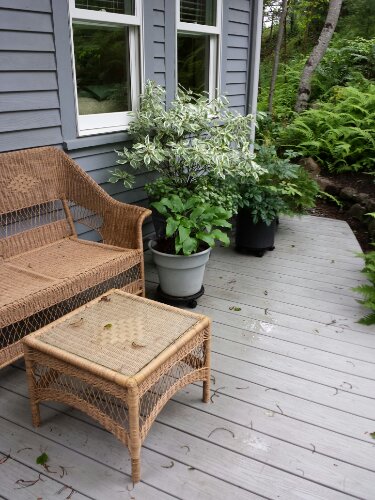
Right now I’m feeling like that jackrabbit scampering across the desert floor being chased by a million ideas. Except that I’m not in the desert. I’m actually off the coast of Maine in Acadia National Park. I’m not even sure if they have jackrabbits here. But that doesn’t matter, because the ideas are still chasing me.
It’s Summer vacation and I can’t turn it off even if I wanted to. A big part of my life is work. It’s where I’m my best. It’s where I connect with colleagues, students, and families. And it feels good. Thankfully it’s 2013 and even though I’m not in school I can still develop and maintain important connections through events like #clmooc.
In just over a week of #clmooc I’ve participated in a Google+ Hangout, I’ve shared my photographs with the community, had a video I created remixed by new colleagues, added over 100 people to my G+ circles, made a sculpture out of plastic, made fish stock out of a halibut rack, participated in a Twitter chat, been mentioned several times in others G+ posts, blogs, and newsletters. And to think this MOOC is just over a week old.
One of the things I know about myself is that I’m not necessarily a maker. I’m not a tinkerer, a crafter, a designer. But I joined this MOOC just for that reason. I knew that the tasks and people would challenge me to take responsible risks. And after seeing what people have already shared, I’ve got my work cut out for me.

Because of so much we will do in #clmooc will be commenting and remixing other people’s work (an assumption), I thought I would share a strategy I use with my students when creating and designing: SCAMPER
Someone once told me that there are no new ideas, simply remixes of old ones. I’m not sure if I believe this 100%, but there are so many examples that seem to suggest this person is right. Just open up the drawers in the kitchen. You’ll find hack after hack of kitchen gadgets.
So when designing something and you need a muse, think about SCAMPER.
S – substitute one thing for another
C – combine pieces
A – adapt
M – magnify or minify the object
P – put to other uses
E – expand, elaborate, or eliminate
R – reverse
For more details about this thinking tool, visit http://www.mindtools.com/pages/article/newCT_02.htm
I know #clmooc will be a challenge for me, but I’m not backing away. The people I connect with with support me fully throughout the entire process. I know that because I’ve already seen it numerous times.
This is an amazing opportunity to make, learn, and connect…with other jackrabbits chasing ideas.

















